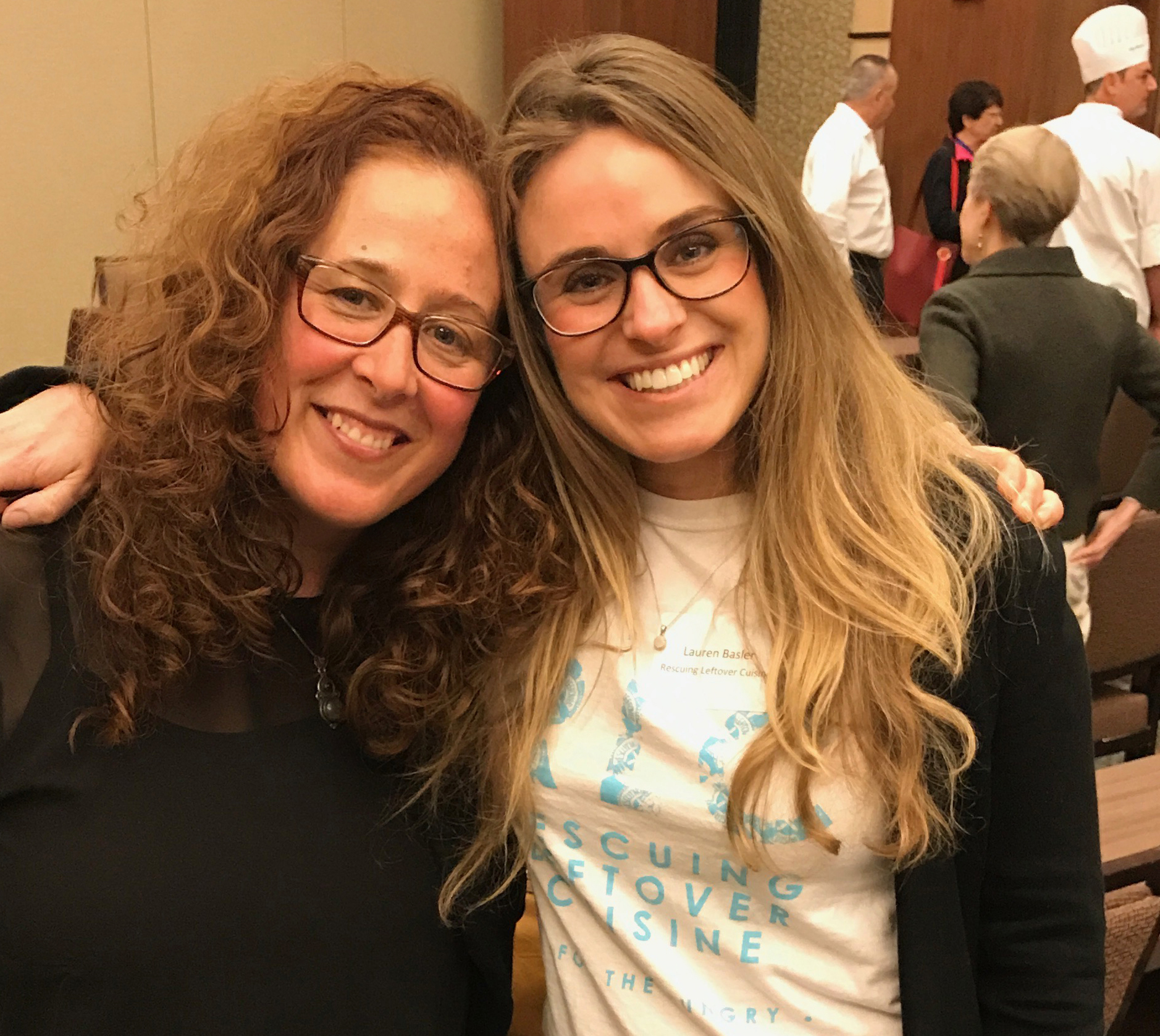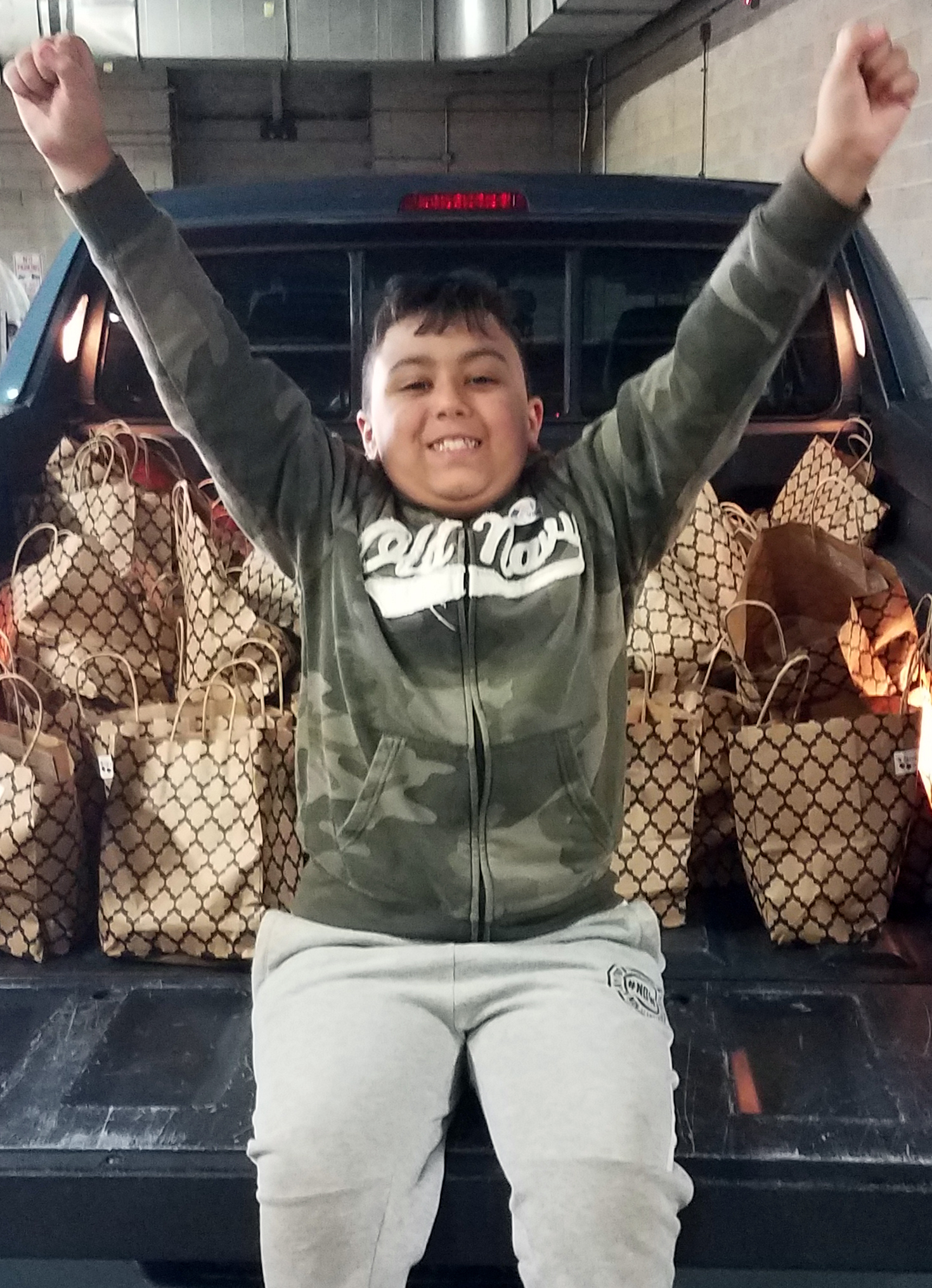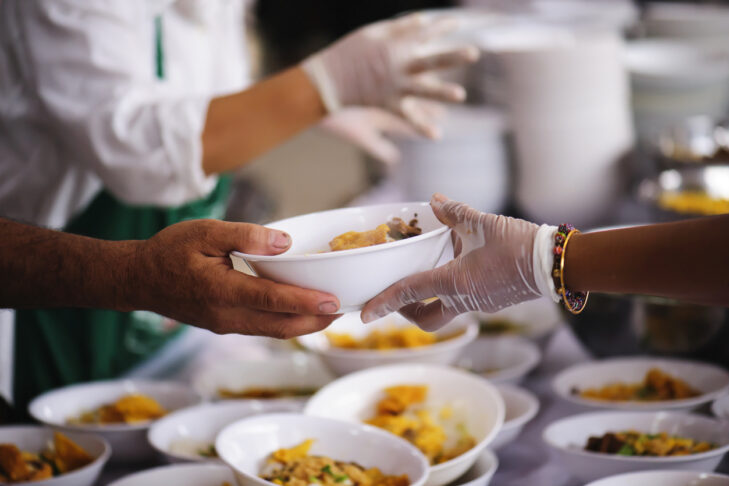It all started with Aunt Frieda. When Rescuing Leftover Cuisine’s New England coordinator, Dana Siles, was a child, she’d travel to New York City to visit Frieda.
“She was a more religious, old-school New York Jew. She was very philanthropic and inspired me intensely,” Siles says. “Although I’m not a religious Jew, tikkun olam was instilled at a young age.”
Siles would travel from Westchester and sleep over in Manhattan, where Frieda would take her to galleries, plays—and soup kitchens.
“I remember the early 1980s very clearly, when people suffering from homelessness were lining the streets. Legs would be spread out on the sidewalk. We’d walk over their legs. And they all knew Frieda! She would bring pies to the soup kitchen. Everyone knew her, and she knew everybody. I remember as a child finding that incredible. They weren’t just somebody; they were a human being,” Siles says. “We’d eat at the soup kitchen, because it was communal. That was my introduction to humility and thinking outside of yourself.”

Today, Siles oversees New England for Rescuing Leftover Cuisine, headquartered in New York. (She is joined by Lauren Basler, head of the Massachusetts branch.) Their mission is to bridge the gap between excess food and those who need it. Volunteers—including kids!—pick up fresh and prepared food from restaurants and businesses and deliver them to organizations, including local nonprofits, including Casa Myrna, Women’s Lunch Place, Children’s Services of Roxbury and New England Center and Home for Veterans.
“We’re here to complement and not compete with any other food rescue. We love Lovin’ Spoonfuls, Boston Area Gleaners and Food for Free,” she says. In this case, though, volunteers are responsible for all of the handoffs.
“Instead of one driver covering a 30-mile radius, we have 1,300 volunteers. In Greater Boston, our active volunteers are 200,” she says. “In order to solve the issue of food insecurity in Massachusetts, we need to have platforms like all of us.”
The organization conducts 87 “rescues” every week in the Boston area. Volunteers can sign up for a specific rescue on a recurring basis, or they can visit an online calendar to pick a one-off slot. It’s an easy way to volunteer with kids, she says, because volunteering is location-based. Sign up near soccer practice or school pickup, and stop for a rescue along the way. Volunteers simply confirm with the donor that food is ready about an hour ahead of time, grab it and drop it with the nonprofit in need. Food is already properly packaged for transport, and the average time commitment is just 45 minutes.

“It’s our duty as human beings and as Jews to instill in this new generation to volunteer both within and outside the Jewish space,” Siles says.
It’s also an easy but impactful way to expose kids to the issue of hunger—Siles notes that nearly one in 10 Massachusetts households are food insecure, which is defined as not having the ability to comfortably rely on a healthy portion of food on a daily basis.
“We tend to think of a food-insecure person as looking a certain way or driving a certain type of car. I think parents need to explain to their children that there are families suffering in their own neighborhood. They may be driving a functional Toyota, and they still might be having a hard time making ends meet,” she says.
Meanwhile, she says, 40% of consumable food gets thrown out. Even if you don’t have time to deliver food, you might encourage your kids to reduce this waste by ordering smaller meals at restaurants, for example—request a half portion and ask for the other half to be boxed and properly stored for donation.
“I can’t cure cancer, but this is my dent. And it takes so many dents to make a difference. Their dent will make a mark eventually—plus, it’s time you can spend together as a family,” Siles says.



